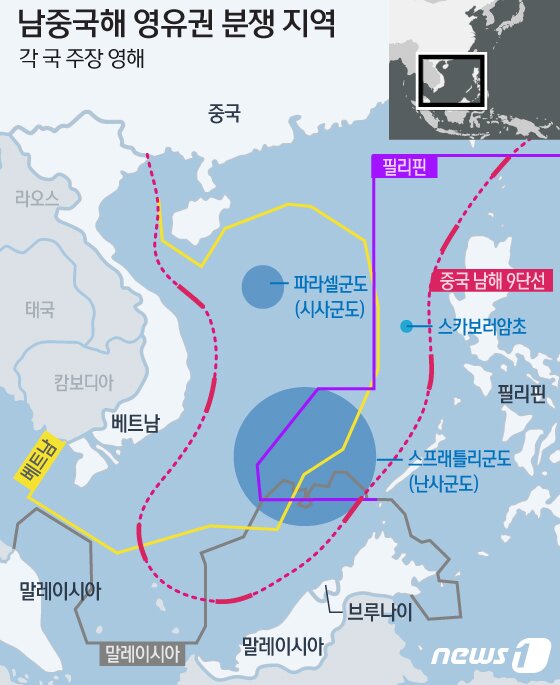 |
| © News1 Designer Il-Hwan Kim |
Recently, as aircraft carriers of the United States and China are simultaneously navigating in conflict zones in the East China Sea and the South China Sea, there is a growing concern about military conflict.
The South China Morning Post (SCMP) of Hong Kong on the 6th (hereinafter referred to as local time) quoted the South China Sea Strategic Posture Detection Plan (SCSIP), which is referred to as a Chinese think tank, and a carrier group led by the US nuclear aircraft carrier USS Theodore Roosevelt was launched in Malacca on the 4th. It said it had entered the South China Sea from the strait.
It also reported that the US guided missile destroyer USS Mustine was operating in the East China Sea and moved to the Yangtze River on the 3rd.
The US Navy confirmed this fact on this day.
According to Reuters, “Theodore Roosevelt entered the South China Sea on the 4th to carry out routine operations.” “This is the second time I entered into.”
In this situation, on the 4th, China passed a carrier group led by the first aircraft carrier Liaoning through the Miyako Strait between Japan’s main island of Okinawa and Miyako Island.
The Miyako Strait connects the East China Sea and the Pacific Ocean.
China and Japan are having a territorial conflict over Diaoyudao (Japanese name Senkaku Islands) in the East China Sea. SCMP said China’s move came a few days after China’s Defense Ministry demanded Japan to “stop all provocative actions in the region”.
In addition, China is also experiencing disputes over the South China Sea with Taiwan and the Philippines. In particular, it is in conflict with Taiwan over the Taiwan Strait, but China also moved the Liaoning ship, which it passed through the Miyako Strait on the 4th, to the waters around Taiwan on the 5th.
China then announced that Liaoning’s training in Taiwan’s waters would be routine, suggesting that “similar training will be conducted regularly in the future,” suggesting that the conflict with Taiwan will continue.
According to Taiwan’s Ministry of Defense, China recently sent 10 military aircraft to Taiwan’s Air Defense Identification Zone (ADIZ).
Another analysis suggests that the US-China maritime competition was triggered by the recent incident in which 200 Chinese ships were anchored on a white reef in the Philippines’ Exclusive Economic Zone (EEZ).
The Philippines saw these ships as maritime militias and protested against China, but tensions have risen as China refuted this as a fishing boat.
The Philippine Ministry of Foreign Affairs said in a statement on the 5th that “China says these ships are avoiding bad weather, but China’s widespread and illegal allegations in the West Philippine Sea (South China Sea) are false.” “I will protest.”
“The passage of US aircraft carriers through the South China Sea is intended to respond to China’s claim of vast maritime territory,” said Ben Shirier, a professor at Macquarie University in Australia. It is to inform,” he analyzed.
The SCMP cited experts, saying, “The simultaneous presence of both naval forces in the Indo-Pacific highlights the risk of military clashes between the powers.”
